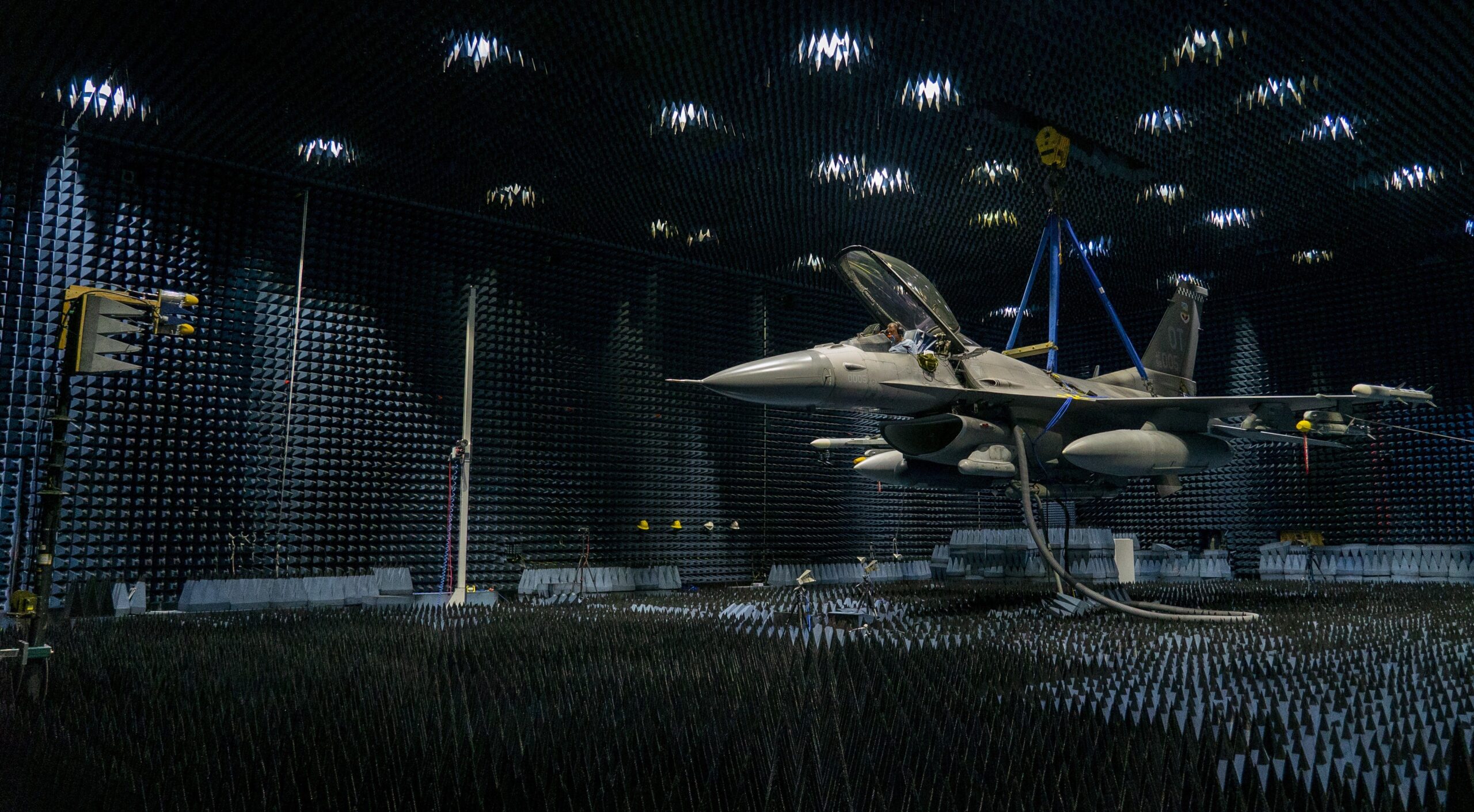VALERIE INSINNA

WASHINGTON: Sometimes, the name of a piece of military technology is meant to inspire fear. The F-4 Phantom II. The MQ-9 Reaper. And now…the Angry Kitten Combat Pod.
Ok, so maybe it’s not the most terrifying name out there. But despite the humble moniker, the Air Force believes the electronic warfare system — which was built to simulate enemy threats, but was so capable that the Air Force is considering turning into an operational pod that can be used to jam and electronically attack adversaries — could “dramatically shape” the future of electronic warfare, the service said in an Aug. 3 news release.
The technology stems from the Angry Kitten pod originally built about a decade ago by Georgia Tech Research Institute, which sought to create an EW system that could adapt to new threats more quickly by using machine learning and easily updatable software.
According to Georgia Tech, the Angry Kitten pod utilizes a cognitive EW approach, which means that it uses machine learning to choose a jamming technique, assess whether it was effective, and respond to an adversary’s own use of electronic attack techniques.
The Angry Kitten pod was initially developed to be carried by aggressor aircraft that play the role of enemy fighter jets during training, with the pod able to simulate electronic attacks. However, the pod was so effective and easy to update that Air Combat Command recommended that four systems be converted to a combat version of the pod, which could actually be used by US fighter pilots to jam enemy sensors, the Air Force stated in the news release.
The Air Force conducted an operational assessment of these new Angry Kitten Combat Pods during 30 sorties over two weeks in April, including final tests at China Lake, Calif.
During that time, the pod’s mission data file software was updated every night based on the threats encountered in flights earlier that day, said Keith Kirk, who manages an Air Force experiment campaign that seeks to develop app-enabled EW systems, known as the App-Enabled Rapidly Reprogrammable Electronic warfare/electromagnetic Systems experiment campaign, or AERRES.
“The software was updated within hours based on the performance they were seeing against certain threats and then was improved, and those improvements were verified during flight test the following day,” Kirk said in the statement. “That’s really tough to do with software and tools that are not designed to open standards.”
Lt. Col. Stephen Graham, the Angry Kitten Combat Pod’s operational test director, said the data files use an open-source programming language, while the software itself is government-owned — making it possible for different entities to quickly develop and field software updates.
According to the news release, organizations such as the 36th Electronic Warfare Squadron, Georgia Tech Research Institute, Air National Guard-Air Force Reserve Test Center and the Air Force Air Warfare Center all helped program new code for the latest jamming techniques.
After a date of flight operations, team members at Nellis Air Force Base would create updates to the mission data files. Those updates were then validated at Robins Air Force Base, Ga., with support from the Air Force Life Cycle Management Center’s Agile Combat Support Directorate.
“We are making great progress toward software-enabled electronic warfare systems that allow us to quickly update our effects based on the changes in the radio frequency environment and the type of effects that we want to make happen,” Kirk said.
Despite the successful tests, the ultimate future of the Angry Kitten Combat Pod has yet to be decided. However, it’s possible the Air Force could take the technology into further testing or operational use, with the Air Force news release nothing that the operational assessment will “provide operational feedback to inform Air Combat Command on a potential future fielding decision.”
No comments:
Post a Comment